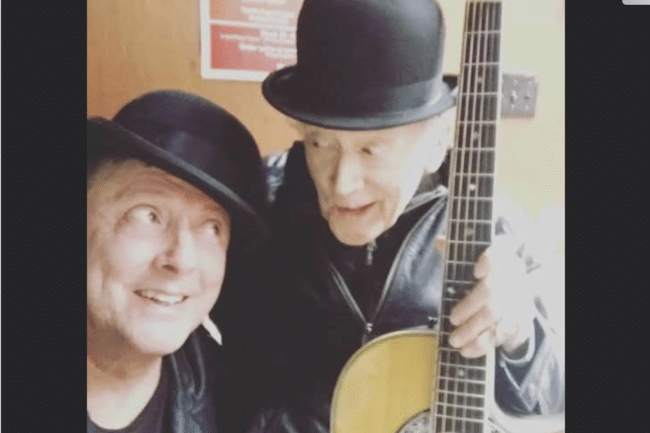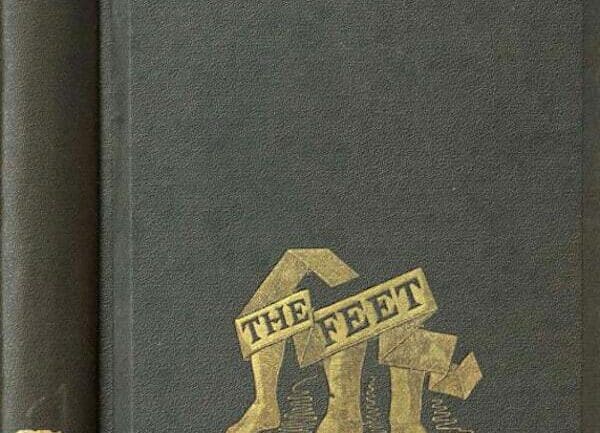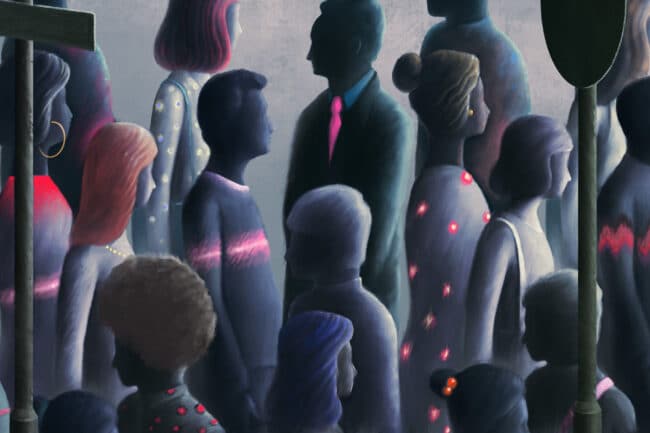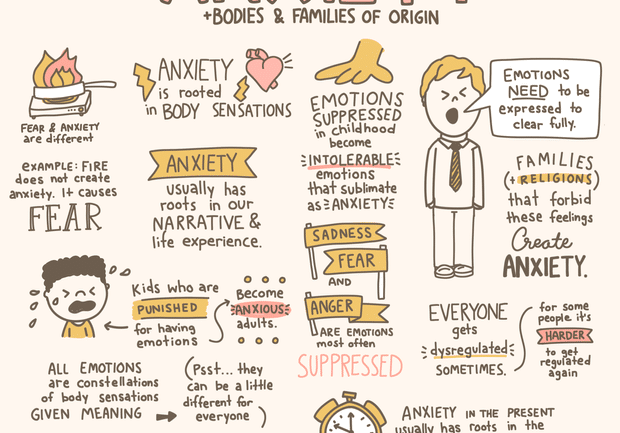Turning Listening on its Ear
With THE HUMAN JOURNEY® Experience, we try to make listening easier.
To things that one family member saw one way, and another … well, another way. To beliefs and values that are different … but worthy of respect. To unspeakables.
Our process teaches that kinda through the back door. And, indeed, we were inspired to work on this as a design problem largely because of having been in “the “good listener” (which can sometimes be code for “frustrated listener”) position … for years.
But, short of learning to conduct the THJ® process for others, there’s a lot you can do, one on one, in your own life, especially as you’re listening in challenging circumstances.
You know when you’re stuck. They’re telling a story they’ve told before, a thousand times. It’s painful, and they’ve got how they tell it down. Now you’re the one who’s listening to it. It’s like the story got stuck in Times Roman, with an occasional drop shadow.
The thing is, they’re stuck, too. Most of us haven’t realized there’s more than one font to set a story in — more than one genre in which that story can fit. We’ve only learned to tell it one way.
And then the gifts in that story get clogged up in there, too.
You can help them shift the story, bring in Optima or Constantia or Futura. Or at least get them started with Century Schoolbook.
You’d do it gently, with the same simple strategy we share when teaching “story-catching” (a fancy name for interviewing). You ask a question.
One that asks them to re-see the world as it was at that moment, not as they see it now. You find a place to ask to take a pause so you can reflect on what they’ve said, and then you offer a question—something that you sincerely, and out of love, want to know — and you may break them out of crusty narrator mode, and re-settle them in a fresh view.
- “Can I ask you to give me a second? I want to just sit with what you’ve just shared.” You wait and you genuinely dig down for the question that’s about what it was like for them at the time of the original story. Ideally (but it takes practice), the question will invite not a yes or no answer, but one that evokes the sights, smells, and perceptions of that time.
- “Do you think he was aware that you were in the room, singing to him?” (Not bad — it’s yes/no, and it asks about someone else, not the storyteller, but it’s going to lead to a descriptive answer anyway about what his face looked like, what the signs were, how they were positioned in the room, and other things you can follow up on.)
- “What do you think you were successful in communicating to her?” (Depending on the context, could be good — it asks for a descriptive answer, and also draws the person toward an owning of their inner life at the key moment.)
- “For you, what’s the most memorable word or sound or thing you saw that seems to encapsulate the whole thing, or that’s strongest for you?” (Again, depending on the context, could be good: it drops the person down into the world of the original story and moves a bit beyond extraneous language to the power of the moment.)
The sincere desire to make listening an act of gently offering a re-formatting of a story — as long as it is presented as a desire to understand, not to judge, control, or change — can unlock what’s in there, once it’s freed from genre. Or font.
That’s one way to make of listening a gift.
Related Posts

The Incredible Will to Sing
The will to make it to a loved one’s graduation or wedding, or to the birth of a new baby, somehow compels the body to obey the will. Stu Klitsner was going to sing at his only granddaughter’s wedding, come hell or high water.

The Chaplain’s Feet
Chaplains exercise their humanness with every patient or family member they meet. What are the parallels between the kind of presence chaplains bring in the spiritual realm and that of the dancer who sees her choreography and performance as a kind of chaplaincy?

Whacking a Gun
At the 2023 Parliament of the World’s Religions, blacksmiths from RAWTools demonstrated how they took guns that had been surrendered from a variety of sources and re-formed them into garden hand tools, making literal their mission and message of anti-violence. The organization takes literally the passage from the Book of Isaiah to “beat their swords into plowshares and their spears into pruning hooks.”

A Vaccine for Loneliness?
Public health has gotten bigger and bigger in recent decades. What was only thought of in the past as individual choices, like drug addiction, gun violence, or smoking crossed over to be thought of by many as social issues and, eventually, as matters of public health. With the Surgeon General’s report that came out in May, 2023, loneliness and isolation may assume their place alongside them as social epidemics.

Grief on the Comedy Stage
Is it in supremely bad taste, or potentially healing in a social setting, to use death and dying as material on the American comedy stage? The post-pandemic fad of comedy shows that deal with what have been taboo topics is currently walking that line.

If You’re a Pro, You Gotta Have a Pro
Lindsay Braman’s example can open your mind about what sorts of both joy and utility you can create, simply by letting your own gifts out of the closet and using them in your work, in recognizing that, if a therapist/doodler can connect two passions, so can you.
